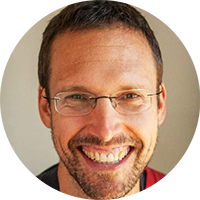Does your studio have an entry-level yoga class? If not, you may want to consider the opportunities you as a teacher, your studio or gym, and your students are missing. As a yoga teacher, you have heard the many reasons why people say they can’t come to yoga class. They see the covers of magazines and the more vigorous classes that are popular in gyms and say to themselves, “I can’t do that,” or “I need to get in shape first,” or “I am too tight or injured to do that.” With this mindset, they might never come.
Conversely, people who do try yoga might approach yoga the way they approach working out, pushing their limits of strength and flexibility, possibly too far without an awareness of alignment. Without an experienced teacher to help them explore these edges, they may find themselves injured.
Luckily, these issues can be addressed through an entry-level class.
It is important to consider what it means to be an “entry-level” class. At one studio where I taught, we defined the entry-level class as being accessible to all skill levels and bodies. We taught to the beginners in the room. Further, it was a chance to teach what many teachers consider to be the most important foundations of yoga: the use of a deep diaphragmatic breath combined with movement and the meditative and mindfulness of our practice.
An entry-level class can create a safe space for students and remove the belief that yoga requires them to be “in shape” before they come to class. It also gives teachers the opportunity to teach foundational principles to students before they begin to work in a flow series or in more complex poses. For example, learning the basic alignment of the hands, wrists, and shoulders of a tabletop or preparation for cat’s breath pose could build the structure for down dog, plank, handstand, and crow variations.
One of the most influential teachers in my life was a man who came to yoga with a back injury from body building back in the early 80’s. His spine came out of his sacrum 5 mm, and he was told he needed surgery. He gained weight and struggled with the pain, refusing surgery. Eventually he found yoga, but all he could do at first was lie on the floor and breathe. With time, some movement came with the breath, and he eventually developed a supine practice that began helping his back improve.
When I met him, he taught this supine practice as the beginner class and required all of his students to start there. This was my first class, and it was challenging. As someone in my early twenties, I was humbled by how limited my body was, even lying on my back. But the safe environment and gentle beginning place allowed me to get past my judgment and kept me coming back.
While a supine practice might be “restorative,” it can also be an asana series that challenges you in all the same ways as a sun salutation series, testing your strength, endurance, flexibility, and breath consciousness. I have a student who is overweight with knee and wrist issues who
challenges all of these same edges while working poses on his back.
Whatever form your entry class takes, it is an opportunity to build a foundation of self-care in practice. This creates a space where students feel safe, both physically and emotionally, to explore their bodies and learn the basics of yoga. They can take this foundation with them if they choose to learn more challenging practices as they develop and grow. It is also an opportunity to teach students ways to develop habits that become part of a sustainable, loving self-care routine that might affect their other physical activities, prevent injury, and improve their quality of life.
Teaching an entry-level class requires us as teachers to be creative and step outside of ourselves and our own practice to meet people where they are. As a practice of self-inquiry, this allows us to return to the beginning, to revisit our own foundations, and perhaps—if we are paying attention—learn something new. There is a Taoist saying that states, “Every journey begins with a single step.”
About Geoffrey
 Geoffrey Huckabay discovered yoga in his early twenties after the death of his father and struggles with depression. He was drawn more to the wisdom path of yoga, and along the way he began exploring the postural practice. He learned through yoga that the physical body could also support the mind and spirit. Geoffrey teaches yoga classes in his community and to mental health patients at a hospital in Northern California, where he also practices as a massage therapist.
Geoffrey Huckabay discovered yoga in his early twenties after the death of his father and struggles with depression. He was drawn more to the wisdom path of yoga, and along the way he began exploring the postural practice. He learned through yoga that the physical body could also support the mind and spirit. Geoffrey teaches yoga classes in his community and to mental health patients at a hospital in Northern California, where he also practices as a massage therapist.
The views expressed in this article are that of the author and do not necessarily reflect the views of Yoga Alliance.